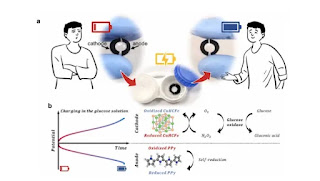Scientists based out of Nanyang Technological University, Singapore (NTU Singapore) have begun working on augmented reality contact lenses capable of displaying virtual information in the real world powered by human tears. The team has begun development of a flexible battery roughly as thin as the human cornea. This ultra-slim battery can store electricity when in contact with a saline source, which can be found in tears.
According to researchers, this solution can extend battery life up to four hours for every 12-hour cycle. The contacts can also be charged using an external battery. The battery itself is made of biocompatible materials. No wires or toxic material were used in the development, promising a more comfortable experience compared to some other smart contacts. The team has already filed a patent and intends to commercialize the smart contacts at some point in the future.
More information:
https://vrscout.com/news/scientists-working-on-smart-contacts-powered-by-human-tears/


